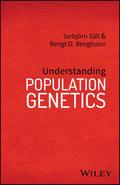Understanding Population Genetics

1. Auflage September 2017
278 Seiten, Softcover
Wiley & Sons Ltd
An inspiring introduction to a vital scientific field.
The reader is taken through ten mathematical derivations that lead to important results, explaining in a hands-on manner the key concepts and methods of theoretical population genetics. The derivations are carefully worked out and easy to follow. Particular attention is given to the underlying assumptions and the mathematics used. The results are discussed and broadened out with relevant current implications. All topics feature questions with helpful answers.
The book is intended for the reader who already knows some population genetics but requires a more comprehensive understanding. It is particularly suited to those who analyse genetic data and wish to better grasp what their results actually mean. It will also be helpful for those who wish to understand how population genetics contributes to the explanation of evolution. Or as the writers claim: If one wants to understand life - in all its improbable and amazing richness - one must start by understanding population genetics.
Derivation 1 Balance between forward and backward mutation 7
Derivation 2 Heterozygote advantage 23
Derivation 3 Breakdown of linkage disequilibrium 45
Derivation 4 Time to coalescence 63
Derivation 5 The evolution of genetic diversity 85
Derivation 6 Fixation of mutations with and without selection 105
Derivation 7 Nonhomogeneous populations 131
Derivation 8 Cost and benefit of sib-interactions 151
Derivation 9 Selection on a quantitative trait 167
Derivation 10 Evolutionary genetic analysis of the sex ratio 187
What's next? 205
Epilogue 215
Thanks 217
Glossary 219
Answers 233
References 257
Index 263
Bengt O. Bengtsson is Emeritus Professor of Genetics at Lund University, Sweden. Bengt received his DPhil from Oxford with a thesis on chromosome evolution. His work covers inbreeding avoidance, partial asexuality and genetic conflicts, but he has also investigated a horizontal gene transfer in grasses. He served as President of the European Society for Evolutionary Biology 1989-91.


